-
 Bitcoin
Bitcoin $105,532.8157
0.77% -
 Ethereum
Ethereum $2,548.2202
1.33% -
 Tether USDt
Tether USDt $1.0002
-0.03% -
 XRP
XRP $2.1658
1.38% -
 BNB
BNB $647.8634
0.54% -
 Solana
Solana $151.9004
5.13% -
 USDC
USDC $0.9998
-0.01% -
 Dogecoin
Dogecoin $0.1757
-0.78% -
 TRON
TRON $0.2728
1.24% -
 Cardano
Cardano $0.6296
0.95% -
 Hyperliquid
Hyperliquid $40.9018
1.86% -
 Sui
Sui $3.0030
4.30% -
 Bitcoin Cash
Bitcoin Cash $460.9894
8.08% -
 Chainlink
Chainlink $13.1954
1.60% -
 UNUS SED LEO
UNUS SED LEO $9.2807
2.61% -
 Avalanche
Avalanche $19.0609
0.65% -
 Stellar
Stellar $0.2573
0.56% -
 Toncoin
Toncoin $2.9704
1.32% -
 Shiba Inu
Shiba Inu $0.0...01197
-0.39% -
 Litecoin
Litecoin $85.9390
1.13% -
 Hedera
Hedera $0.1534
-0.05% -
 Polkadot
Polkadot $3.7860
0.74% -
 Ethena USDe
Ethena USDe $1.0000
-0.04% -
 Monero
Monero $317.1834
1.33% -
 Dai
Dai $0.9997
-0.02% -
 Bitget Token
Bitget Token $4.5199
-0.24% -
 Pepe
Pepe $0.0...01111
1.43% -
 Uniswap
Uniswap $7.1573
-0.52% -
 Pi
Pi $0.6033
-0.63% -
 Aave
Aave $273.9232
0.85%
How to deal with the MACD double-line adhesion oscillation? Which patterns indicate an impending change?
MACD double-line adhesion signals market indecision, often leading to potential reversals or continuations once momentum returns.
Jun 14, 2025 at 01:22 pm
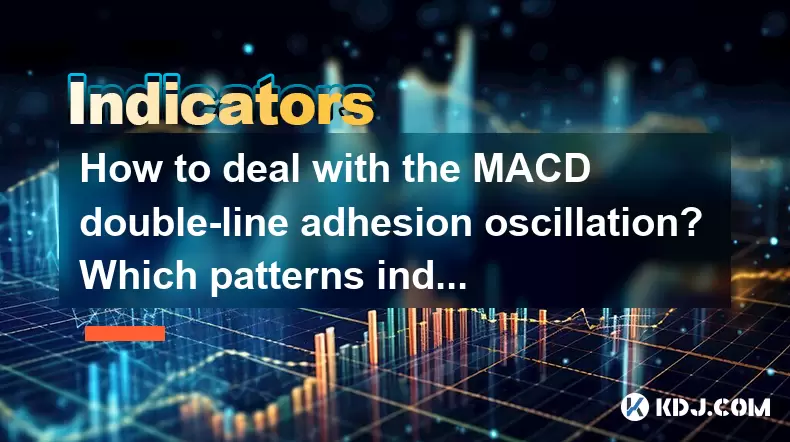
Understanding MACD Double-Line Adhesion
The MACD double-line adhesion refers to a situation where the MACD line and the signal line (both part of the Moving Average Convergence Divergence indicator) converge closely together, often oscillating around the zero line. This phenomenon typically occurs during periods of market indecision or consolidation. When these two lines stick together for an extended period, it suggests that momentum is weakening or balancing out between bulls and bears.
In technical analysis, the MACD histogram also flattens during this phase, indicating little to no change in momentum. Traders should pay close attention when this pattern emerges after a strong trend because it may signal an impending reversal or continuation depending on context.
Important: The key here is not just observing the adhesion itself but analyzing its position relative to previous price action and other technical indicators.
Identifying Key Patterns During Adhesion
Several patterns can emerge when the MACD double-line remains stuck together. These include:
- Flat Histogram Bars: As the MACD line and signal line converge, the histogram bars shrink significantly, sometimes even touching zero. This indicates that the momentum behind the current trend is fading.
- Zero Line Crossings: If the MACD line hovers near the zero line while remaining glued to the signal line, it shows that neither buyers nor sellers are gaining control.
- Narrow Range Movement: Both lines move within a very tight range, suggesting low volatility and uncertainty among traders.
These patterns should be interpreted with caution, especially if they occur after a prolonged uptrend or downtrend in cryptocurrency markets.
Important: In crypto trading, sudden volatility can break such patterns quickly, so real-time monitoring becomes essential.
Confirming Impending Changes Using Price Action
To anticipate a potential breakout from MACD double-line adhesion, traders must observe accompanying price action signals. Some of the most reliable ones include:
- Candlestick Reversal Patterns: Look for engulfing candles, doji formations, or hammer/stick patterns near key support/resistance levels.
- Volume Spikes: A sudden increase in volume during adhesion could indicate accumulation or distribution before a major move.
- Break of Key Levels: A decisive move above resistance or below support, especially when accompanied by a divergence in the MACD, can confirm a directional shift.
Combining these elements with MACD behavior increases the probability of identifying valid trade setups.
Important: Never rely solely on MACD during adhesion—always cross-reference with other tools like RSI, moving averages, or Fibonacci retracements.
Practical Steps to Trade MACD Adhesion Breakouts
When dealing with MACD double-line adhesion, follow these practical steps to manage risk and identify opportunities:
- Monitor Multiple Timeframes: Check higher timeframes (like 4H or daily) to understand broader market sentiment before acting on lower timeframe signals.
- Wait for Confirmation Candles: Don’t rush into trades as soon as the lines separate—wait for at least one or two confirmation candles showing strength in a direction.
- Use Stop Losses Strategically: Place stop losses beyond recent swing highs/lows or use volatility-based stops to avoid being shaken out prematurely.
- Track Histogram Expansion: Once the histogram starts expanding again, it confirms that momentum is returning—this is often the best time to enter a trade.
- Watch for Divergences: If price makes a new high/low but the MACD does not, it’s a powerful sign of weakness or strength building up beneath the surface.
These steps help traders filter out false signals and focus on high-probability setups.
Important: Discipline and patience are crucial when handling MACD adhesion scenarios, especially in volatile crypto environments.
Recognizing False Breakouts and Managing Risk
One of the biggest risks when dealing with MACD double-line adhesion is falling victim to false breakouts. Cryptocurrency markets are known for sharp, misleading moves that trap retail traders.
Here’s how to protect yourself:
- Avoid Chasing Entry: Wait until the price has clearly committed to a direction before entering.
- Utilize Order Types Wisely: Use limit orders instead of market orders to prevent slippage during rapid movements.
- Set Alerts: Use trading platforms or bots to set alerts for when the MACD line crosses the signal line decisively or when the histogram expands.
- Evaluate Market Conditions: Consider macro factors like news events, exchange listings, or regulatory updates that might influence price unrelated to technicals.
- Backtest Your Strategy: Before applying any strategy live, test it against historical data to see how it performs during similar MACD adhesion phases.
By incorporating these practices, traders can reduce emotional decision-making and improve their odds of success.
Important: Always treat every breakout as potentially false until confirmed by multiple sources of data.
Frequently Asked Questions
Q: Can MACD double-line adhesion occur in sideways markets only?
A: No, MACD double-line adhesion can occur in trending markets too, especially when momentum temporarily stalls. It's more about the balance of buying and selling pressure than the overall trend direction.
Q: How long can MACD lines remain adhered before signaling a change?
A: There's no fixed duration—some adhesions last hours, others days. The critical factor is the surrounding price behavior and whether a significant catalyst breaks the equilibrium.
Q: Is it safe to ignore MACD adhesion during high volatility?
A: No, it’s not advisable to ignore it. High volatility can cause rapid changes once the adhesion breaks. Being aware allows you to prepare rather than react.
Q: Should I combine MACD adhesion analysis with fundamental factors in crypto?
A: Yes, combining technical signals like MACD adhesion with fundamental insights (e.g., network upgrades, adoption trends) provides a more robust trading framework, especially in unpredictable crypto markets.
Disclaimer:info@kdj.com
The information provided is not trading advice. kdj.com does not assume any responsibility for any investments made based on the information provided in this article. Cryptocurrencies are highly volatile and it is highly recommended that you invest with caution after thorough research!
If you believe that the content used on this website infringes your copyright, please contact us immediately (info@kdj.com) and we will delete it promptly.
- Solana (SOL) Price Prediction: $200 Soon? Experts Are Betting on Ruvi AI (RUVI) As Investors Enjoy 9,200% Potential
- 2025-06-16 00:45:12
- Fedrok AG is a Swiss blockchain company focused on combating climate change by transforming the carbon credit market.
- 2025-06-16 00:45:12
- NEXO Will Host an AMA on X on Crypto Taxation Featuring Representatives from Koinly
- 2025-06-16 00:40:15
- OGV to OGN Migration Process Will End on May 27th
- 2025-06-16 00:40:15
- Blockchain fintech firm Liquid Noble says it's working to improve the user experience for investors in tokenized precious metals
- 2025-06-16 00:35:12
- DIA will host an AMA on X with PeaPods Finance
- 2025-06-16 00:35:12
Related knowledge
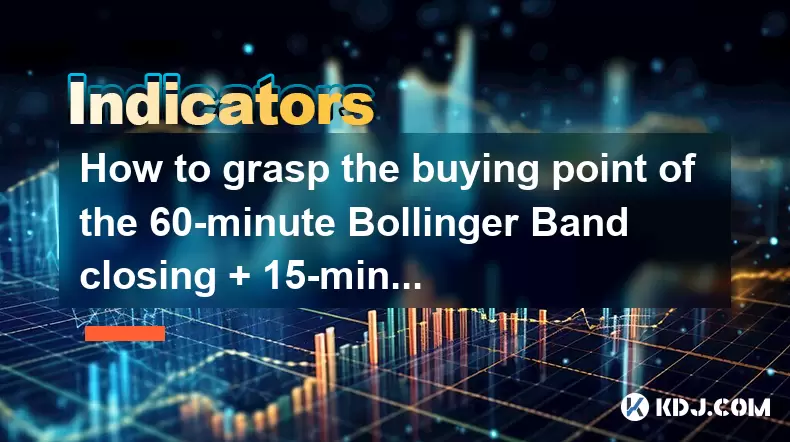
How to grasp the buying point of the 60-minute Bollinger Band closing + 15-minute MACD bottom divergence?
Jun 16,2025 at 12:03am
Understanding the Bollinger Band Closing Signal on a 60-Minute ChartThe Bollinger Band closing signal refers to a situation where the price closes outside the upper or lower band and then re-enters it in the subsequent candlestick. In this context, we focus on the lower Bollinger Band closing, which indicates a potential reversal from a downtrend. On th...
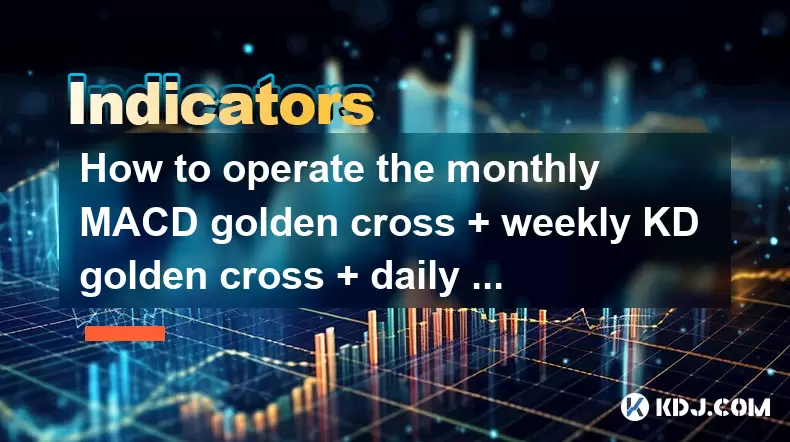
How to operate the monthly MACD golden cross + weekly KD golden cross + daily volume breakthrough?
Jun 15,2025 at 05:36am
Understanding the Strategy: Monthly MACD Golden CrossTo effectively operate the monthly MACD golden cross, traders must first understand what this signal entails. The MACD (Moving Average Convergence Divergence) golden cross occurs when the MACD line crosses above the signal line on a given chart timeframe. When this happens on the monthly chart, it sug...
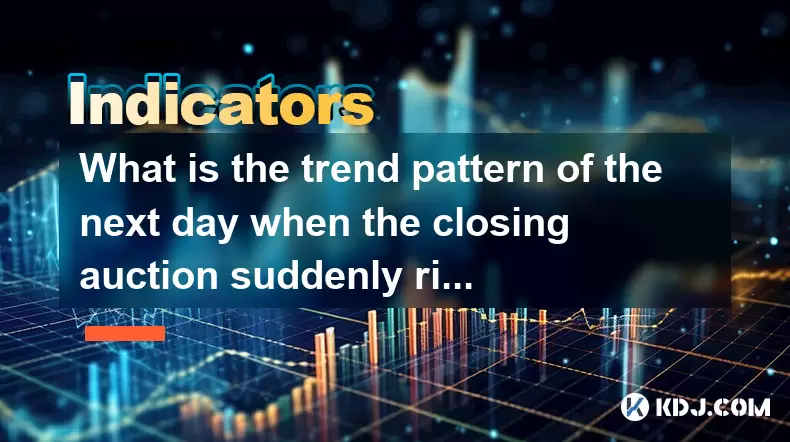
What is the trend pattern of the next day when the closing auction suddenly rises?
Jun 15,2025 at 08:15am
Understanding Closing Auctions in Cryptocurrency MarketsIn the context of cryptocurrency trading, a closing auction refers to a mechanism used by exchanges to determine the closing price of an asset at the end of a trading session. This process typically occurs within a short time window before the market closes for the day and aims to provide a fair an...

What does it mean when the volume fluctuates during the sideways trading at high levels?
Jun 15,2025 at 10:28am
Understanding Volume Fluctuations in Sideways TradingWhen volume fluctuates during sideways trading at high levels, it refers to the changes in the number of assets traded over a given period while the price remains relatively stable, moving within a defined range. This phenomenon typically occurs when the market lacks a clear directional bias—neither b...
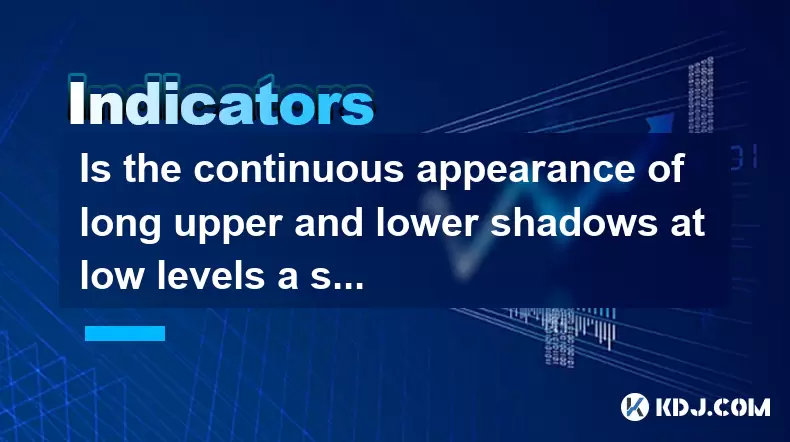
Is the continuous appearance of long upper and lower shadows at low levels a signal of accumulation?
Jun 15,2025 at 01:43am
Understanding Long Upper and Lower Shadows in Candlestick ChartsIn the world of cryptocurrency trading, candlestick patterns are widely used to analyze price movements. A long upper shadow, also known as a wick or tail, indicates that the price rose significantly during the period but was pushed back down by selling pressure. Conversely, a long lower sh...
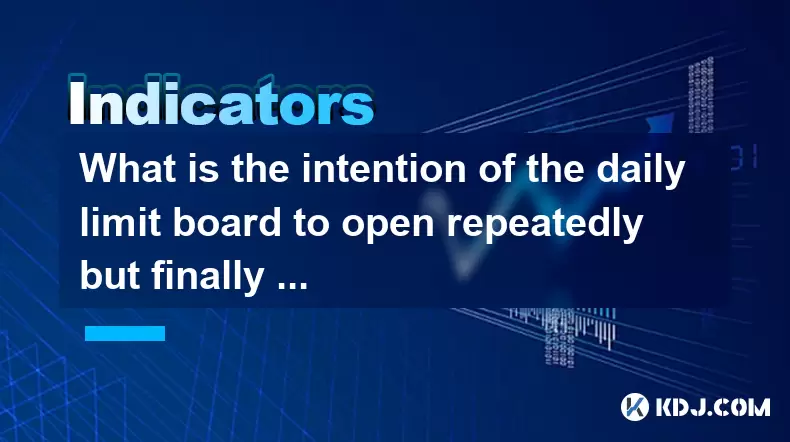
What is the intention of the daily limit board to open repeatedly but finally close?
Jun 15,2025 at 01:08am
Understanding the Daily Limit Board in Cryptocurrency TradingIn cryptocurrency trading, a daily limit board refers to a price movement restriction mechanism applied by certain exchanges or regulatory bodies. This mechanism is primarily used to prevent extreme volatility and panic selling or buying during periods of intense market fluctuation. When an as...

How to grasp the buying point of the 60-minute Bollinger Band closing + 15-minute MACD bottom divergence?
Jun 16,2025 at 12:03am
Understanding the Bollinger Band Closing Signal on a 60-Minute ChartThe Bollinger Band closing signal refers to a situation where the price closes outside the upper or lower band and then re-enters it in the subsequent candlestick. In this context, we focus on the lower Bollinger Band closing, which indicates a potential reversal from a downtrend. On th...

How to operate the monthly MACD golden cross + weekly KD golden cross + daily volume breakthrough?
Jun 15,2025 at 05:36am
Understanding the Strategy: Monthly MACD Golden CrossTo effectively operate the monthly MACD golden cross, traders must first understand what this signal entails. The MACD (Moving Average Convergence Divergence) golden cross occurs when the MACD line crosses above the signal line on a given chart timeframe. When this happens on the monthly chart, it sug...

What is the trend pattern of the next day when the closing auction suddenly rises?
Jun 15,2025 at 08:15am
Understanding Closing Auctions in Cryptocurrency MarketsIn the context of cryptocurrency trading, a closing auction refers to a mechanism used by exchanges to determine the closing price of an asset at the end of a trading session. This process typically occurs within a short time window before the market closes for the day and aims to provide a fair an...

What does it mean when the volume fluctuates during the sideways trading at high levels?
Jun 15,2025 at 10:28am
Understanding Volume Fluctuations in Sideways TradingWhen volume fluctuates during sideways trading at high levels, it refers to the changes in the number of assets traded over a given period while the price remains relatively stable, moving within a defined range. This phenomenon typically occurs when the market lacks a clear directional bias—neither b...

Is the continuous appearance of long upper and lower shadows at low levels a signal of accumulation?
Jun 15,2025 at 01:43am
Understanding Long Upper and Lower Shadows in Candlestick ChartsIn the world of cryptocurrency trading, candlestick patterns are widely used to analyze price movements. A long upper shadow, also known as a wick or tail, indicates that the price rose significantly during the period but was pushed back down by selling pressure. Conversely, a long lower sh...

What is the intention of the daily limit board to open repeatedly but finally close?
Jun 15,2025 at 01:08am
Understanding the Daily Limit Board in Cryptocurrency TradingIn cryptocurrency trading, a daily limit board refers to a price movement restriction mechanism applied by certain exchanges or regulatory bodies. This mechanism is primarily used to prevent extreme volatility and panic selling or buying during periods of intense market fluctuation. When an as...
See all articles

























































































